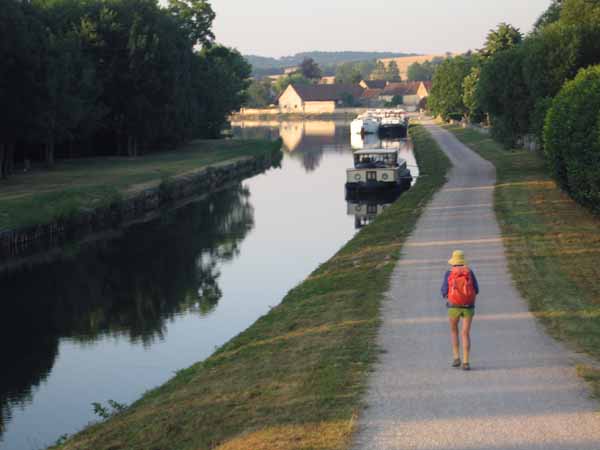
Man-made channels have existed for thousands of years, ever since people first formed settlements. They are of two kinds: aqueducts (to convey water) and boat canals (to convey goods and people).
The first sizeable boat canals in France were built in the seventeenth century, starting with the Briare-Montargis canal (1642), whose purpose was to join the Loire river with the Seine. Soon afterwards (1666), the great project of the Canal du Midi was begun, leading eventually to a direct link between the Mediterranean and the Atlantic.
A network of other canals was constructed during the eighteenth and early nineteenth centuries, as the industrial revolution gained momentum.

Nobody could have foreseen that the railways, which began to appear from the 1830s, would so quickly render canal transport uneconomic. Today many of the smaller canals are used only for pleasure boats.
Boat canals provide the walker with many excellent routes, as they are nearly always accompanied by a towpath, which makes a pleasant off-road track, and have the added virtues of flatness, shade and an abundance of villages along the way.
Unlike other walks in France, canal towpaths are quite suitable for cyclists and we see many of them gliding past as we go along at our more natural pace.
Canal de Berry (4 walks, 13 days in total)
Canal de Briare (1 day)
Canal of Burgundy (Canal de Bourgogne) (11 days)
Lateral Canal of the Loire (3 days)
Canal du Midi (7 days plus 2 days on the Rigole)
Canal du Nivernais (10 days)
Canal d’Orléans (1 day)
To identify a walk, click a red line on this map to get a brief description.